25 Great Nano Fish for Small Fish Tanks (with Pictures)

Updated on
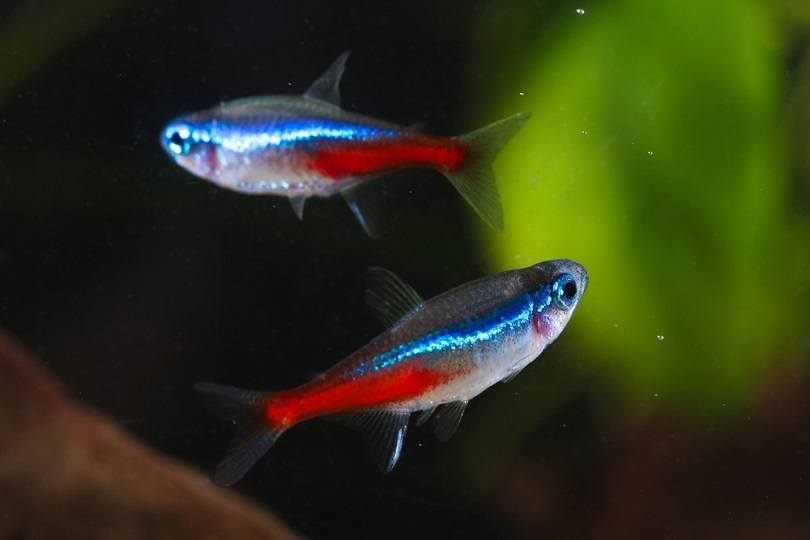
If you live in an apartment or small home, you may think that keeping an aquarium is out of reach for you. Nano tanks have been rapidly growing in popularity, and more and more people are discovering that nano tanks can be healthy environments with proper care.
Aside from proper care and maintenance of the tank, choosing the right inhabitants for your nano tank is extremely important. If you choose fish for your nano tank because of the size they are in the pet store, then you may end up with a 12-inch-long fish in a 5-gallon tank. Researching appropriate fish for nano tanks is the first step to creating a fantastic nano tank.
What is a Nano Tank?
In the world of freshwater aquariums, a nano tank is typically considered to be a tank that is 5–10 gallons or smaller. Generally, nano tanks are also defined by their inhabitants. Keeping large fish in undersized tanks doesn’t make it a nano tank, it just makes it an overstocked tank. Usually, nano tank inhabitants are nano fish, which are typically smaller than 2–3 inches when fully grown.
However, not all small fish make good nano tank inhabitants. Some fish prefer lots of space or groups that are too large to keep in a 5-gallon tank. You’ll need to stock your nano tank with fish that are small and are happy to live in a small environment without stress.
The 25 Nano Fish for Small Fish Tanks
1. Chili Rasboras
These tiny fish only reach 0.5 inches in length at most, so they stay very small. They are brightly colored and since they are shoaling fish, a group of them brings a ton of color to your tank. Chili Rasboras are easy to care for and are peaceful, so they can be kept in community tanks. They need 5 gallons for a small shoal and do well in blackwater tanks.
2. Ember Tetras

Ember Tetras stay under 1 inch in length, so they stay extremely small while not being quite as small as Chili Rasboras. These fish are an eye-catching orange color and are sometimes also called Fire Tetras. They are shoaling fish that prefer densely planted tanks with plenty of driftwood. Unlike many types of Tetras, Ember Tetras spend most of their time in the middle of the water column. They do best in a tank that is 10 gallons or larger.
3. Neon Tetras

Easily the most popular type of Tetra, Neon Tetras are vibrant blue and red fish that typically stay under 1.5 inches in size. They are shoaling fish that prefer groups of 10 or more. They can thrive in 10-gallon tanks and are peaceful, making them excellent additions to community tanks. These fish are sensitive to poor water quality and rapid changes in parameters, so ensure the tank is well-maintained and fully cycled to keep them healthy.
4. Glowlight Rasboras
These cute little fish are similar in body shape to Chili Rasboras, but they have streaks of black and bright orangey-yellow down their bodies. They are peaceful fish that should be kept in shoals, and the larger the group, the more active and interesting their behaviors will become. Glowlight Rasboras typically stay below 1-inch in size and only require an 8-gallon tank. A high-quality diet and low-stress environment will bring out their brightest colors.
5. Cardinal Tetras

Cardinal Tetras are similar in appearance to Neon Tetras, but they do have different care needs. These fish tend to be more moderately difficult to care for and are susceptible to problems related to changes in water quality or parameters. They are eye-catching, especially when kept in shoals of 15 or more fish. They can reach around 2 inches in size and can be kept in tanks as small as 10 gallons for a small shoal. The more fish you have in the shoal, the larger the tank should be.
6. Harlequin Rasboras
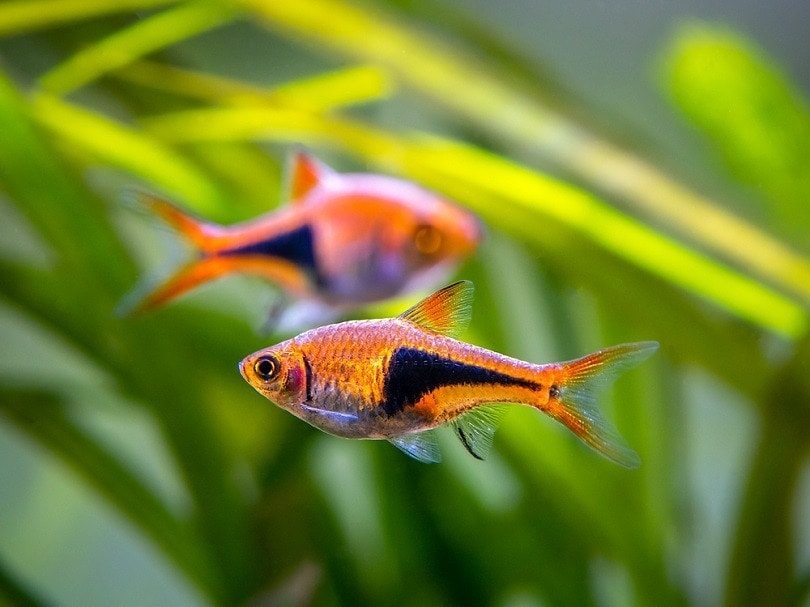
Harlequin Rasboras reach around 2 inches in length and have tall, reddish bodies with a black triangle on the side of their bodies. They prefer open swimming spaces and spend most of their time in the middle of the water column. These fish are peaceful community fish but tend to be timid if not kept in shoals. They are sensitive to water quality and should be kept in tanks of at least 10 gallons.
7. Scarlet Badis
These brightly colored fish are peaceful community fish that stay below 1 inch but do best in tanks that are 10 gallons or larger. Scarlet Badis are easy to care for and their bright colors and interesting shape will draw attention to your tank. These tiny fish are peaceful but predatory, so they do not make good tank mates to fish or invertebrates that are smaller than they are. They will eat fry and small invertebrates like shrimplets.
Related Read: 8 Best Tank Mates for Scarlet Badis
8. Endler’s Livebearers
These petite fish only reach around 1–1.5 inches in length and do well in tanks as small as 5 gallons. They’re social fish that prefer to be kept in groups. They reproduce rapidly, so keeping single-sex tanks is a good idea if you don’t want fry. Endler’s Livebearers are related to Guppies and come in a variety of eye-catching colors and patterns. They are often sold as feeder fish, so you may luck into some Endler’s Livebearers for only a few cents.
9. Guppies

These prolific breeders only reach around 1.5–2.5 inches in size and can thrive in tanks as small as 10 gallons. Guppies are lively, social fish that are easy to care for and are peaceful enough for community tanks, although their lively nature may be stressful to more timid tank mates. Guppies come in a variety of colors and patterns. If you don’t want a tank full of Guppies, it’s a good idea to keep a single-sex tank to prevent breeding. With males and females together, your tank can become overrun with Guppies within months.
10. Celestial Pearl Danios

Also sometimes called Galaxy Rasboras, these beautiful fish are popular in nano tanks for their bright colors and unique spotted pattern. They reach around 1 inch and should be kept in tanks of at least 10 gallons. CPD are generally peaceful fish, but they prefer to be kept in harems. Keeping too many males in a tank with females can lead to aggression between the males. Make sure not to overstock these fish and provide them with a well-planted tank with plenty of space for everyone to coexist.
11. Zebra Danios

These silver and black striped fish reach around 2 inches in length and do best in tanks that are at least 10 gallons. They should be kept in shoals and prefer large groups of at least 15 fish. They are easy to care for and are good fish for beginning fish keepers. Zebra Danios make good additions to community tanks that are densely planted. Their gentle nature and low care level make them highly sought after for community tanks.
12. Betta Fish
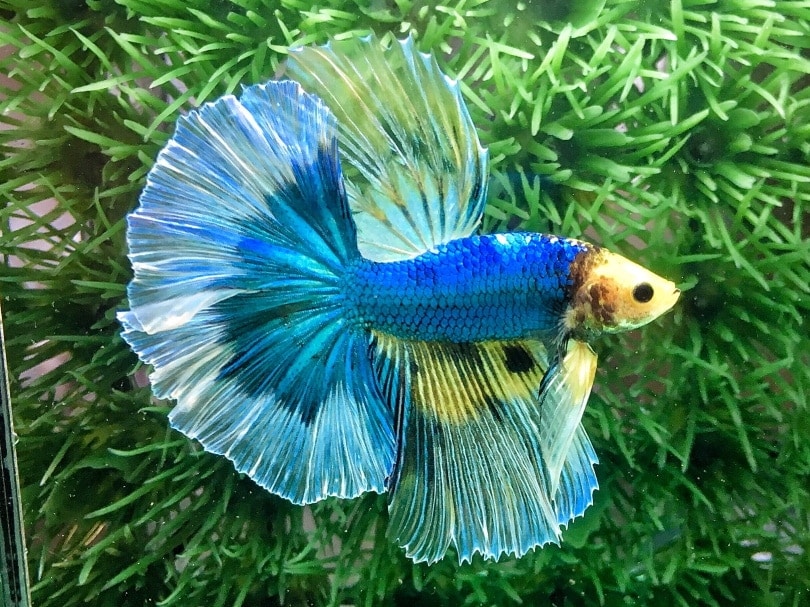
One of the most popular fish in the fish-keeping hobby makes a great nano tank inhabitant. Bettas do best in tanks that are at least 5 gallons and keeping them in smaller tanks can cause stress and lead to illness and a shortened life expectancy. Betta fish don’t usually make good community fish, especially males. If you attempt to keep a Betta fish in a community tank, then it should be larger than 5 gallons and should have plenty of plant cover to break up the line of sight and allow for hiding if needed by tank mates.
13. Otocinclus Catfish
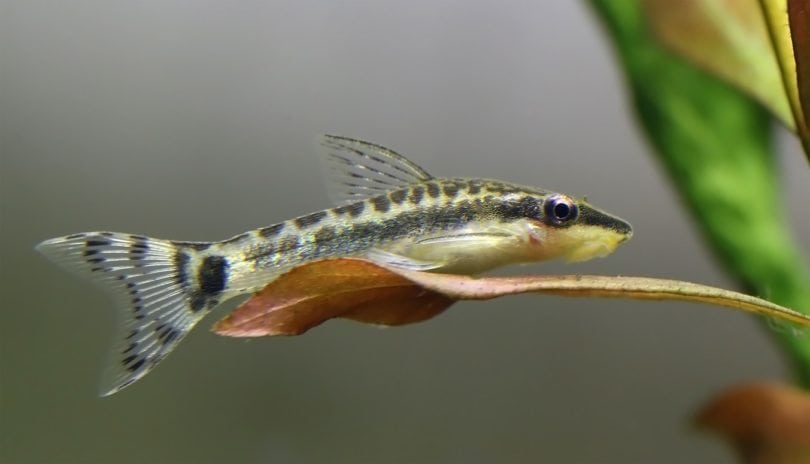
Oto Cats are tiny algae eaters that usually stay below 2 inches in size. They can be kept alone, but this often results in them becoming quite timid. They prefer the company of other Otos and are happiest in small groups. They are efficient algae eaters that need a planted tank that is at least 10 gallons. They can be kept in community tanks and, when kept in small groups, will become very active in the tank.
14. Pygmy Corydoras Catfish

These cute, chubby catfish only reach around 1 inch in size. They should be kept in tanks of at least 10 gallons and prefer to be kept in small shoals of between 4–8 fish. They will exhibit schooling behaviors when kept in groups. They are easy-care fish that are great for beginners, and they are very peaceful, which makes them good for community tanks. They prefer densely planted tanks and, when they feel happy and safe, they will often begin reproducing.
15. Pea Puffers

Pea Puffers typically stay below 1.5 inches and can be kept in 5-gallon tanks. They prefer to be kept in harems since males will become aggressive toward other males. Females are peaceful fish that can be kept in some community tanks. Pea Puffers are popular for their penchant for eating invasive animals in tanks, like bladder snails, limpets, and hydra. They shouldn’t be kept with tank mates that are smaller than them and that you don’t want to be eaten!
16. Least Killifish
Least Killifish are great fish for beginning fish keepers due to their low-maintenance nature. They are timid fish that prefer to be kept in groups of their own kind. They only reach around 1.5 inches in size and can be kept in tanks as small as 5 gallons. Least Killifish don’t usually make good additions to community tanks due to their shy nature, but they can be kept in community tanks with laid-back fish that won’t bother them. Unlike most Killifish, Least Killifish are livebearers.
17. Norman’s Lampeye Killifish
It would be a lie to say that these big-eyed fish aren’t at least a little unusual looking. They are hardy fish, though, and are exceptionally peaceful. Lampeye Killifish are also hardy, making them a great pick for beginner fish keepers. They reach around 1.5 inches in length and can be kept in tanks as small as 5 gallons. They prefer to be kept in trios or larger groups, and they prefer a densely planted aquarium.
18. Licorice Gourami
Almost Betta-like in appearance, Licorice Gourami are black fish with full fins and colorful markings. They are not good picks for community tanks because they tend to be somewhat picky eaters, so it’s easy for them to be outcompeted for food. They stay below 2 inches in length and a pair can be kept in a tank as small as 5 gallons. They prefer to be kept in pairs or trios, and they do best when only one male is present.
19. White Cloud Mountain Minnow

Unlike most of the nano fish on the list, White Cloud Mountain Minnows are cool water fish and often don’t require a tank heater to maintain a safe temperature for them. They are iridescent green and pink fish that should be kept in shoals to encourage them to become active and feel safe. In fact, the larger the shoal, the more daring you’ll see your WCMM become. They only reach up to 1.5 inches in size and do well in tanks as small as 5 gallons.
20. Cherry Barbs
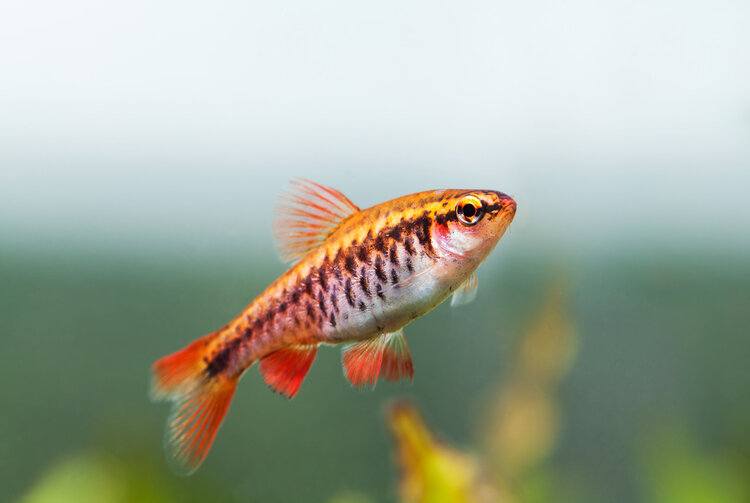
These peaceful omnivores are a cherry red color that becomes bolder with a healthy diet and proper care. Unlike many of their Barb relatives, Cherry Barbs are peaceful fish that can be kept in community tanks. They are shoaling fish that reach around 1.5 inches in size and can be kept in a tank as small as 10 gallons, but they tend to do best in larger tanks. If kept in shoals of mixed sexes, the males will often exhibit the most attractive colors in an attempt to attract a mate and outcompete the other males.
21. Bluefin Nothos
These shimmery, iridescent fish grow to their full size of 2–2.5 inches quickly. They can be kept in tanks that are 5–10 gallons and are peaceful tank inhabitants that often show off unusual and interesting behaviors, like egg burying. Bluefin Nothos reproduce readily and are very short-lived, typically only reaching a year in age. However, with excellent care, they can reach 2 years of age. They are moderately difficult to care for and aren’t a great option for beginners.
22. Asian Stone Catfish
These unusual fish are highly camouflaged and are bottom dwellers. They reach around 1.5 inches in size and can be kept in tanks as small as 5 gallons. They don’t like to live alone and should be kept in trios or larger groups. They are scavengers by nature and shouldn’t be kept with larger or more aggressive bottom feeders. If they are, they may not get enough to eat since they won’t be able to compete for food against larger tank mates.
23. Sixray Corydoras Catfish
Similar in appearance to Corydoras Catfish, the Sixray Corydoras Catfish is also sometimes called the False Cory Cat. These peaceful fish typically reach around 1 inch in size and can be kept in 10 gallons tanks. They need a soft substrate because their barbels can be easily damaged by sharp edges. These fish are moderately difficult to care for and should not be handled with bare hands. They have a sharp dorsal fin that is capable of cutting you and thier tank mates. It’s important to only keep them with tank mates that won’t curiously poke at these fish.
24. Bumblebee Goby

Bumblebee Gobies are adorable little black and yellow striped fish that barely top 1-inch in size. They can be kept in tanks as small as 10 gallons, but they are difficult to care for and are highly sensitive to water quality. Gobies are often sold as freshwater fish, but they are not true freshwater fish. They are brackish fish and will live a punctuated life if kept in freshwater. They do best when kept alone and will often squabble with other Gobies. For the health and well-being of these fish, do not attempt to bring one home unless you are prepared to meet its specific needs.
25. Dwarf Shrimp

So, obviously, dwarf shrimp aren’t fish at all. However, Neocaridina and Caridina shrimp varieties make excellent nano tank inhabitants. They are small and require very little space, with large groups often being comfortable in well-kept tanks as small as 2–3 gallons. With proper care, they will reproduce readily. They do prefer well-planted tanks, and Caridina shrimp tend to be extremely sensitive to water parameters, making them moderately difficult to care for. When it comes to shrimp keeping, it’s important to invest in a kit that measures GH and KH so you can keep up with the hardness and alkalinity of the water to ensure healthy molting.
Conclusion
When it comes to nano tanks, there are tons of great options available to you. Many of these fish are available at big box and small retailers, as well as online breeders and retailers. Even with a nano tank, it’s imperative that you properly cycle the tank in preparation for adding fish. Otherwise, you may end up with sick or dead fish, especially if you attempt to perform a fish-in cycle with sensitive fish. Plan ahead and ensure the tank is set up to the preferences of the fish you intend to add to your new nano tank.
Featured Image Credit: Geza Farkas, Shutterstock












